Strawberries are one of the most popular and rewarding fruits to grow at home. Their sweet, sun-ripened flavor, charming appearance, and versatility in desserts and preserves make them a favorite among gardeners. While traditionally grown in garden beds and containers, strawberries also thrive beautifully in hanging baskets. Growing strawberries this way not only saves space but also adds ornamental value to patios, balconies, and small gardens.
If you’ve ever wondered, “How do you grow strawberries in hanging baskets?”, this guide will walk you through everything you need to know — from choosing the right variety to planting, caring, and harvesting these delightful fruits overhead.
Why Grow Strawberries in Hanging Baskets?

Before diving into the planting process, it’s helpful to understand the benefits of growing strawberries in hanging baskets:
Space-Saving
Perfect for those with small patios, balconies, or urban gardens where ground space is limited.
Pest and Disease Control
Elevating strawberries off the ground protects them from soil-borne diseases, slugs, snails, and rot.
Decorative Appeal
Strawberry plants trail beautifully over the edges of baskets, with lush foliage, delicate flowers, and bright red berries creating a charming display.
Easier Harvesting
No need to bend or kneel — berries hang at eye level for quick, easy picking.
Choosing the Best Strawberry Varieties for Hanging Baskets
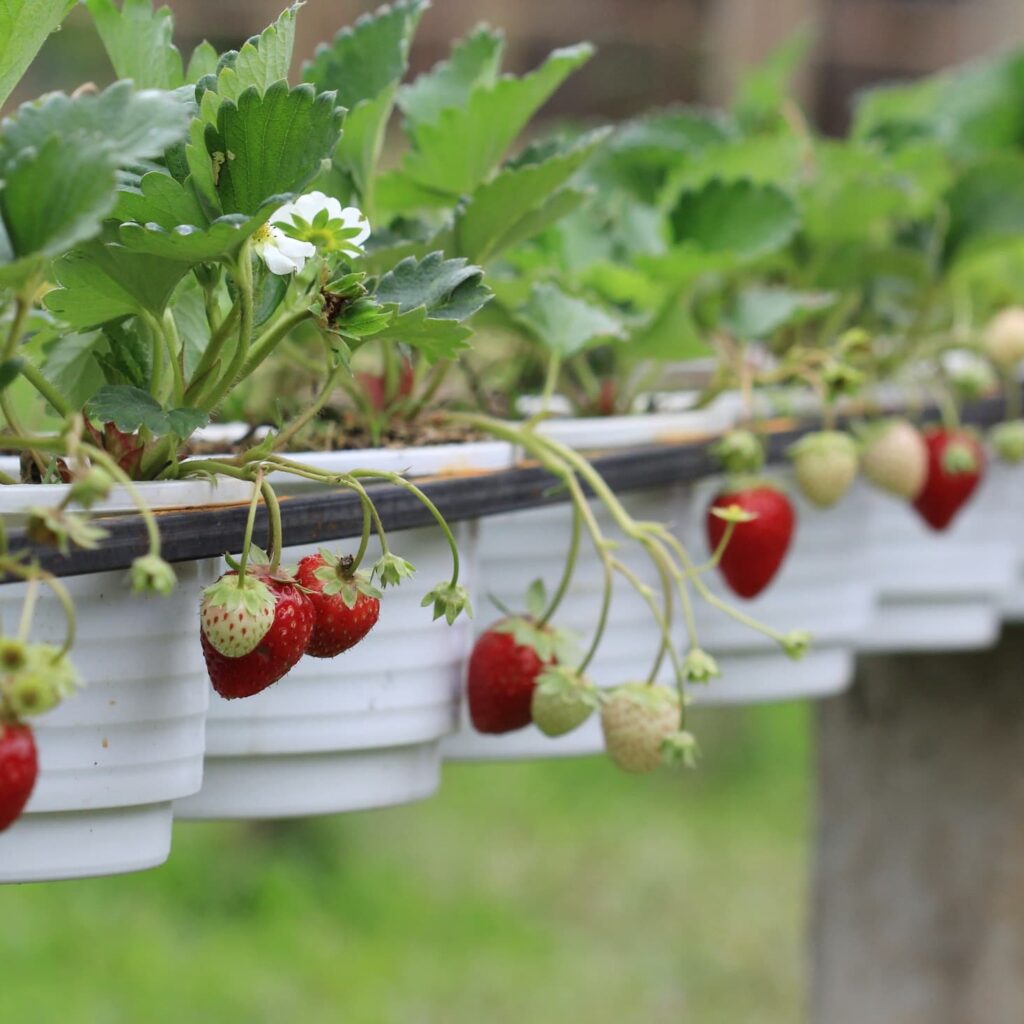
Not all strawberry types perform equally well in hanging baskets. The best choices are varieties with a trailing or compact growth habit and continuous or multiple harvests.
Recommended Types:
Ever-Bearing Varieties:
Produce several harvests throughout the season.
- ‘Albion’ — Sweet flavor, disease-resistant.
- ‘Evie-2’ — Compact, productive, perfect for containers.
- ‘Seascape’ — Vigorous and tolerant of various climates.
Day-Neutral Varieties:
Produce fruit steadily as long as temperatures stay mild.
- ‘Mara des Bois’ — French variety known for its aromatic, sweet berries.
- ‘Tristar’ — Small, flavorful berries ideal for baskets.
Tip: Avoid June-bearing varieties for baskets, as they produce one large harvest and tend to spread aggressively via runners.
Choosing the Right Hanging Basket
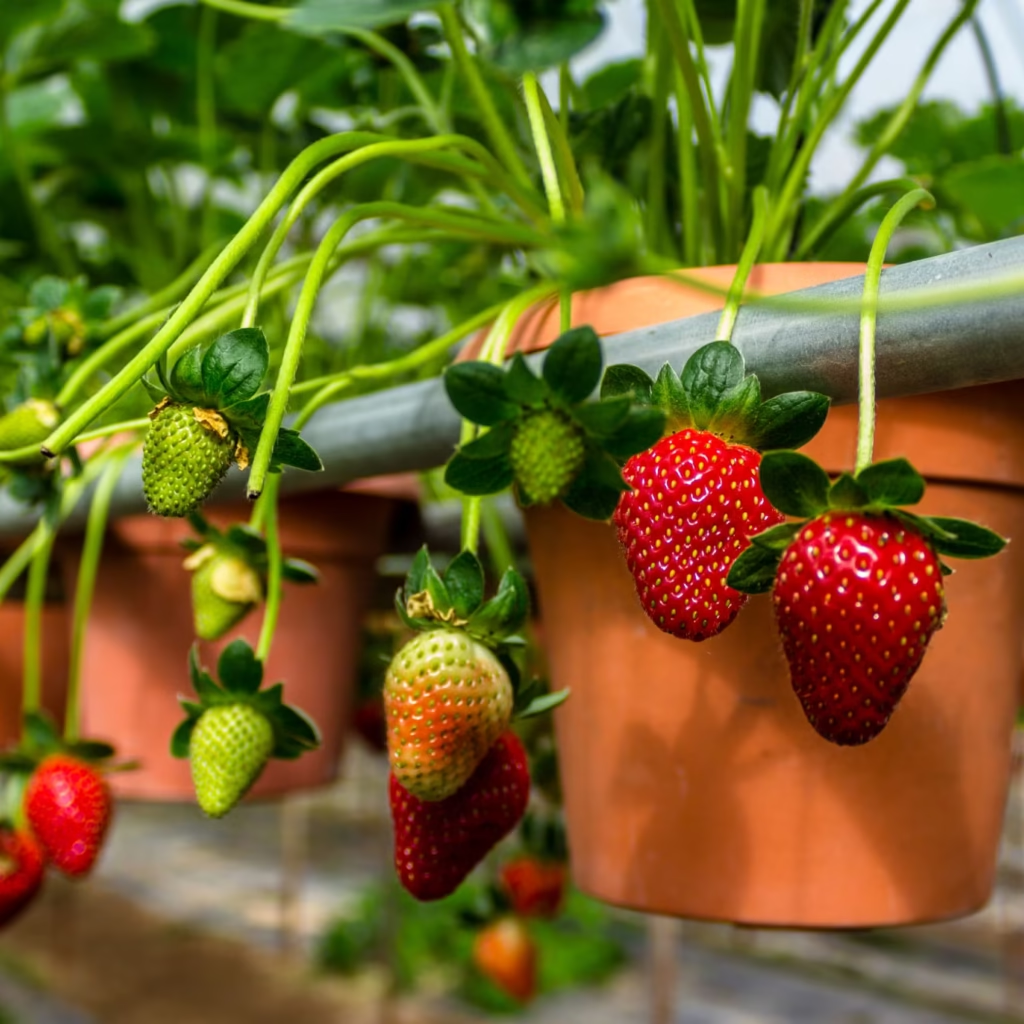
Basket Size:
- Minimum 12–14 inches (30–35 cm) in diameter.
- Depth should be at least 6–8 inches to accommodate root systems.
Basket Type:
- Wire hanging baskets with a coconut coir liner are excellent for breathability and aesthetics.
- Plastic or resin hanging baskets retain moisture better in hot, dry climates.
Drainage:
Ensure your basket has adequate drainage holes to prevent waterlogging, which leads to root rot.
Planting Strawberries in Hanging Baskets
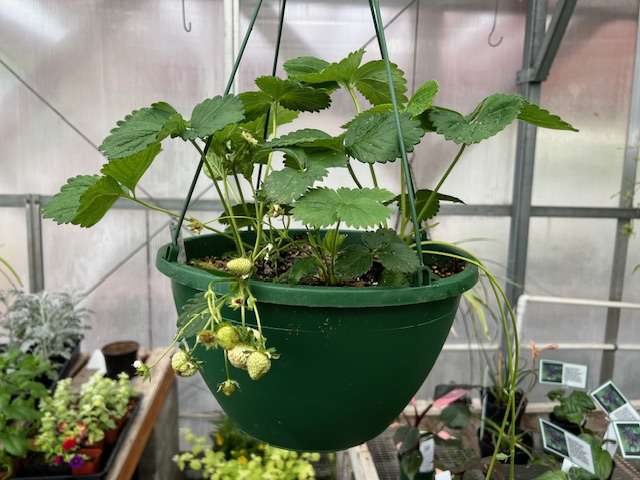
Follow these steps for a successful planting:
Prepare the Basket
- Line wire baskets with a coconut fiber liner or moss.
- Add a layer of lightweight, well-draining potting mix enriched with compost.
- Consider adding slow-release organic fertilizer for continuous nourishment.
Position the Plants
- Space strawberry plants 6–8 inches apart.
- In a 12–14 inch basket, plant 3–5 strawberry plants evenly around the basket’s edge to allow foliage and fruit to cascade over the sides.
Tip: If your basket has side openings, you can insert plants horizontally through them for a fuller, cascading effect.
Planting Depth
- Position plants so the crown (where the leaves emerge) sits at soil level — not too deep, not too shallow.
Top Off With Soil
- Gently fill around the roots with soil.
- Firm the soil lightly to secure the plants.
- Water thoroughly to settle the soil.
Caring for Hanging Basket Strawberries
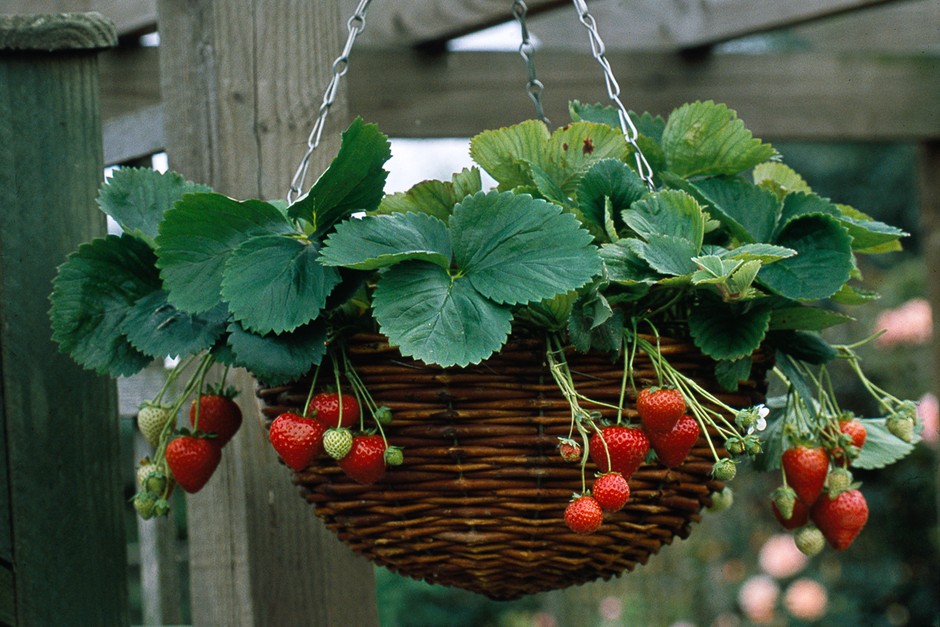
Watering
Hanging baskets dry out faster than ground soil.
Water daily in warm weather, especially during fruiting. Ensure the soil stays consistently moist but not waterlogged.
Tip: Use a long-spout watering can or hose attachment to easily reach overhead baskets.
Feeding
For continuous fruiting:
- Apply a liquid organic fertilizer every 10–14 days during the growing season.
- Use a fertilizer higher in potassium (like a tomato feed) to promote flowering and fruit development.
Sunlight
Strawberries need at least 6–8 hours of direct sunlight daily for the best yields.
Placement tips:
- Hang baskets on sunny patios, balconies, or under pergolas.
- Rotate the basket occasionally for even light exposure on all sides.
Pruning and Runner Control
Remove any runners (long stems that grow horizontally to form new plants) unless you want to propagate more strawberry plants.
This helps the plant focus energy on producing fruit rather than spreading.
Tip: Pinch off dead leaves and spent flowers regularly to keep plants healthy.
Protecting Strawberries in Hanging Baskets
Bird Protection
Birds love ripe strawberries.
Solution: Drape fine mesh netting over the basket during fruiting season.
Frost Protection
Strawberries are cold-sensitive in containers.
Options:
- Move baskets to a sheltered spot during frost warnings.
- Wrap baskets with hessian or bubble wrap in winter.
Harvesting Your Strawberries
- Harvest berries when they are fully red, firm, and fragrant.
- Pick early in the day for the best flavor.
- Check baskets daily in peak season, as fruit ripens quickly in hanging positions.
Tip: Use scissors or garden snips to avoid damaging the plant when harvesting.
Can You Overwinter Strawberry Baskets?
In regions with mild winters (Zones 7 and above), strawberries in baskets can overwinter outdoors with protection.
In colder climates:
- Move baskets to an unheated garage, shed, or cold frame.
- Water sparingly to keep soil just barely moist.
- Resume regular care in early spring.
Conclusion
How do you grow strawberries in hanging baskets? It’s a simple, space-saving, and highly rewarding method that involves selecting the right ever-bearing or day-neutral variety, using a well-draining basket with rich soil, and providing regular water, sunlight, and light feeding.
By elevating your strawberry plants, you’ll reduce pest problems, enjoy easier harvesting, and add a touch of charm to your outdoor spaces. Whether you’re working with a spacious patio or a small balcony, hanging baskets filled with cascading strawberry plants deliver both ornamental beauty and sweet, homegrown treats.
With consistent care and a little planning, you can enjoy luscious strawberries right at your fingertips — hanging just outside your door.
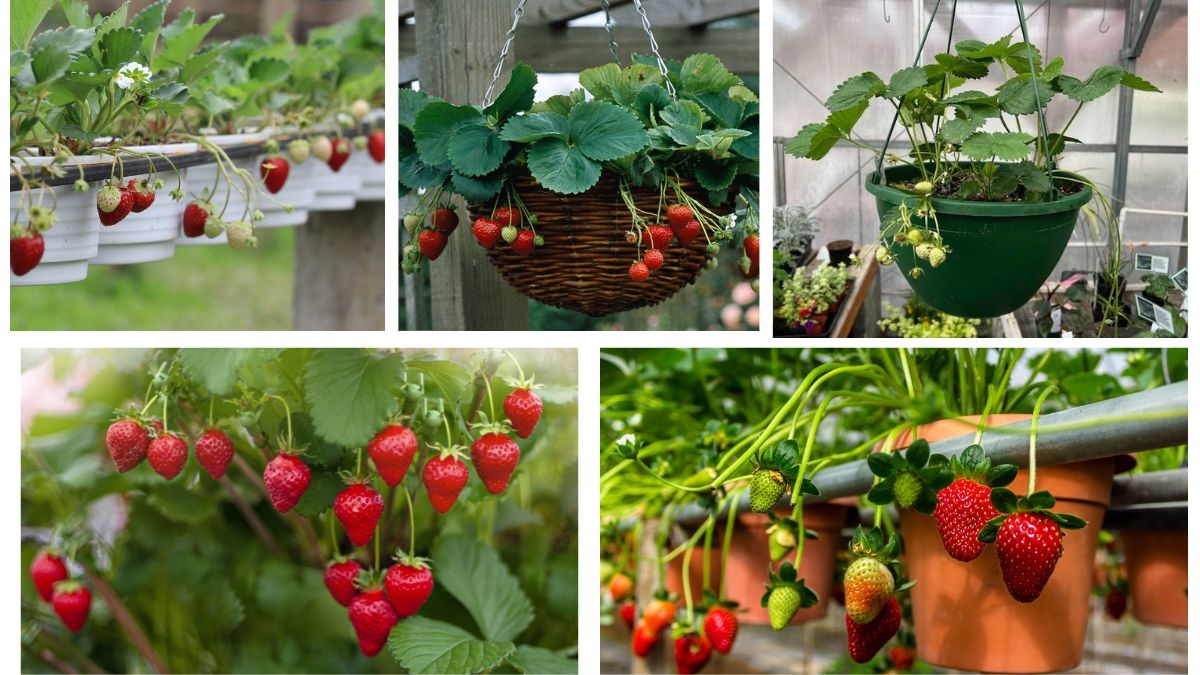



Leave A Comment